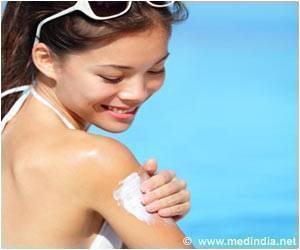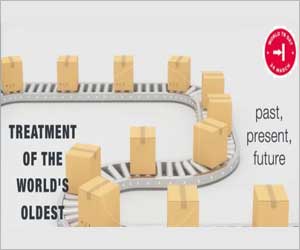- Tanning is a protective response that increases melanin production to shield the skin
- Sunburn results from excessive UV exposure, causing redness, pain, and peeling due to skin cell damage
- Both tanning and sunburn can increase the risk of long-term skin damage and cancer
Tanning and sunburn are two distinct reactions of the skin to ultraviolet (UV) radiation from the sun. Both involve exposure to sunlight but lead to significantly different outcomes. Let’s explore the science behind tanning and sunburn, elucidating the key differences between these phenomena with expert insights from Dr. Kisalay Saurav, Dermatologist & Cosmetologist, and Founder of Dr. Saurav’s Skin Clinic in Bengaluru.
’
Advertisement
What is Tanning?
Tanning is the process by which the skin’s pigment, known as melanin, is produced in response to UV radiation (1). When the skin is exposed to UVB rays, specialized cells called melanocytes within the skin’s epidermis start producing melanin. Melanin is a dark pigment that acts as a natural defense mechanism against harmful UV radiation by absorbing and dissipating the UV rays before they can damage the DNA of skin cells.
The purpose of tanning is to provide the skin with some degree of protection against future UV exposure. The melanin darkens the skin, which can help filter out a certain amount of UV radiation and reduce the risk of immediate sunburn and long-term damage like skin cancer.
Advertisement
Science Behind Tanning
When UVB rays penetrate the skin, they trigger melanocytes to produce more melanin. This increase in melanin production results in a tan, which is essentially the skin’s way of building up a protective barrier against further UV damage. The melanin absorbs the UV rays, preventing them from penetrating deeper into the skin and damaging the DNA within skin cells. Over time, this process helps to reduce the risk of sunburn and other forms of UV-induced damage, including skin cancer.
Advertisement
What is Sunburn?
Sunburn, on the other hand, occurs when the skin is exposed to excessive amounts of UV radiation, primarily UVB rays (2). Unlike tanning, which is a protective mechanism, sunburn is a sign of damage to the skin cells. When the skin is overwhelmed by UV radiation, the DNA in the skin cells becomes damaged, triggering an inflammatory response.
The redness, pain, and peeling associated with sunburn are a result of increased blood flow to the affected area as the body tries to repair the damage. Severe or repeated sunburns can lead to long-term skin damage, aging, and an increased risk of skin cancer.
Science Behind Sunburn
When UVB radiation damages the DNA in skin cells, it triggers an inflammatory response. This response is characterized by increased blood flow to the affected area, which causes the redness and warmth associated with sunburn. The body attempts to repair the damaged cells, leading to pain and peeling as the skin sheds its damaged outer layer. Over time, repeated sunburns can lead to chronic skin damage, premature aging, and a heightened risk of developing skin cancer.
Key Differences Between Tanning and Sunburn
Here are the key differences between tanning and sunburn that help you understand better:
-
Purpose:
Tanning is a natural defense mechanism to protect the skin from UV damage. On the other hand, sunburn is a sign of UV-induced damage to the skin cells.
-
Melanin Production:
Tanning involves the production of melanin, which darkens the skin to protect against UV radiation. Sunburn does not involve increased melanin production; instead, it results from damaged skin cells.
-
Skin Reaction:
Tanning leads to a gradual darkening of the skin, which can offer some level of protection against further UV exposure. Sunburn causes redness, pain, and peeling, indicating immediate damage to the skin.
-
Time of Exposure:
Tanning occurs with prolonged and moderate exposure to the sun’s UV rays. Sunburn occurs with intense and excessive exposure, often during the peak hours when the sun’s rays are the strongest.
In summary, tanning and sunburn are two different responses of the skin to UV radiation. Tanning involves the production of melanin and acts as a protective mechanism against further UV damage, gradually darkening the skin. In contrast, sunburn is a result of excessive UV exposure, causing immediate damage to the skin cells and leading to redness, pain, and peeling. It is crucial to strike a balance between enjoying the sun responsibly to obtain a healthy tan and protecting the skin from harmful UV radiation to avoid sunburn and potential long-term damage.
Tips for Sun Safety
Wear Sunscreen:
Apply a broad-spectrum sunscreen with at least SPF 30 before going outside. Reapply every two hours, or more often if swimming or sweating.
Seek Shade:
Avoid direct sun exposure during peak hours, typically between 10 a.m. and 4 p.m. Seek shade under trees, umbrellas, or awnings when outdoors.
Protective Clothing:
Wear protective clothing such as long-sleeved shirts, pants, and wide-brimmed hats to shield your skin from the sun.
Sunglasses:
Protect your eyes by wearing sunglasses that block 100% of UV rays.
Hydrate:
Drink plenty of water to keep your skin hydrated and healthy.
Monitor Skin Changes:
Regularly check your skin for any changes, such as new moles or spots, and consult a dermatologist for any concerns.
By understanding the differences between tanning and sunburn and taking proactive measures to protect your skin, you can enjoy the sun safely and maintain healthy skin. Remember to be mindful of your sun exposure, use protective strategies, and seek professional advice if you experience severe sunburn or notice any unusual changes in your skin.
With insights from Dr. Kisalay Saurav, Dermatologist & Cosmetologist, Founder of Dr. Saurav’s Skin Clinic, Bengaluru, this article aims to educate and empower you to take care of your skin while enjoying the benefits of the sun responsibly.
References:
- Tanning
Gange RW. Tanning. Dermatol Clin. 1986 Apr;4(2):189-93. PMID: 3955891. - Sunburn
Guerra KC, Crane JS. Sunburn. 2023 Oct 29. In: StatPearls [Internet]. Treasure Island (FL): StatPearls Publishing; 2024 Jan–. PMID: 30521258.
Source-Medindia



